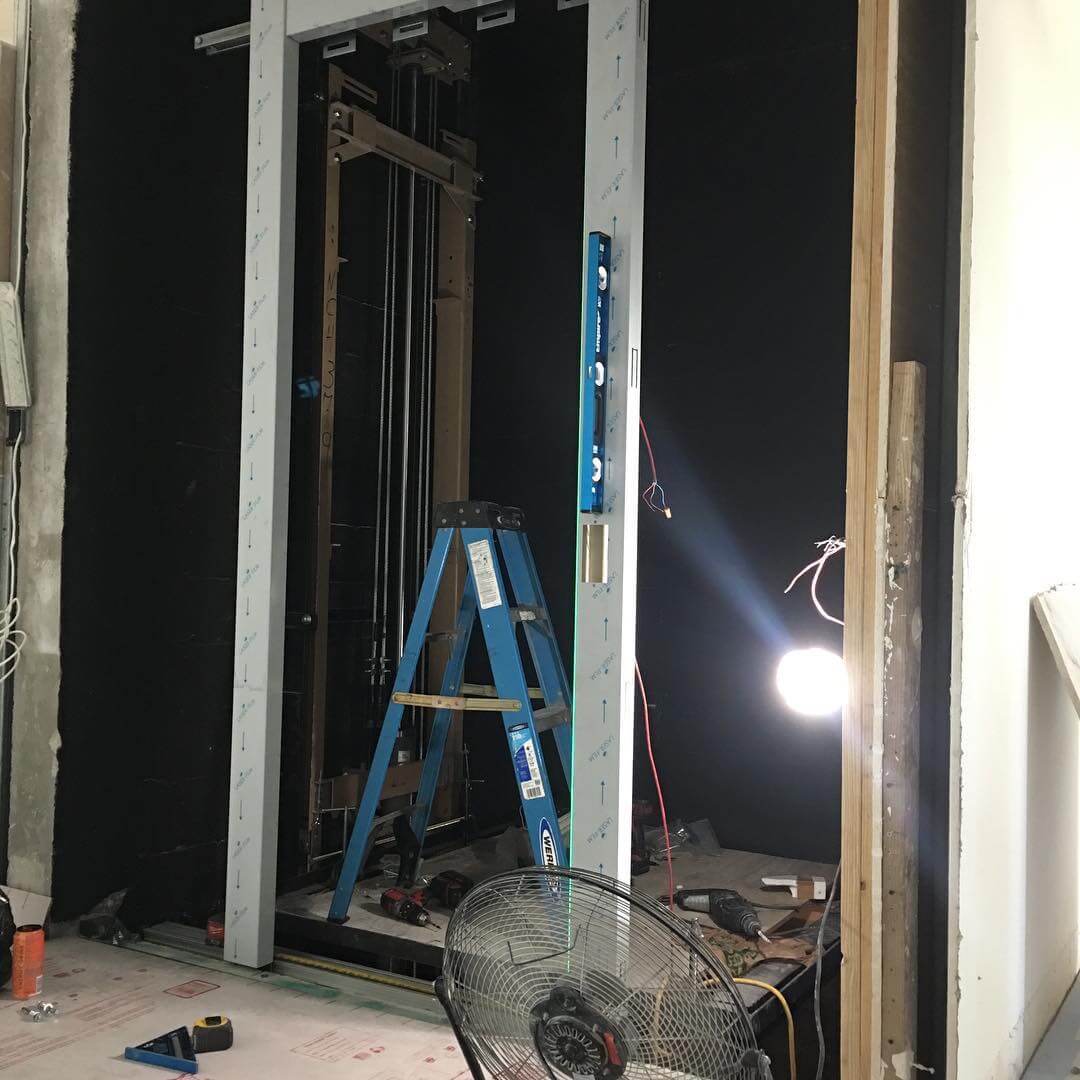If you’ve decided that installing a home elevator would be either a necessity or a convenience in your home, you’ll soon find this equipment can be virtually life-changing.
But before you move forward with the residential elevator installation process, many important questions will need to be answered along with considerations for the design, cost, size, and type of your elevator.
Whether you’re having a residential elevator installed in a new home or having one retrofitted to an existing home, these are some of the key points you’ll need to cover when you discuss your plans with elevator companies.
Before the residential elevator installation process begins
Your residential elevator shouldn’t be installed until you’ve discussed answers to these questions:
- What types of home elevators are right for my home and how much room will an elevator take up in my home?
- How much will installing a home elevator cost?
- What kind of maintenance will my residential elevator require?
- Do I want to opt for custom designs for my elevator?
Types of home elevators
Different homes are better suited to certain types of elevators. The right choice for you can depend on things like the size of your home, your budget, and the reason you’re having a home elevator installed.
Hydraulic elevators are a common choice for the home, specifically those that don’t require a machine room. Hydraulic elevators are better suited to buildings under five stories, because they operate at a slower speed but they can carry heavier loads. They’re also more affordable to install than a traction elevator and tend to require less maintenance.
For example, one of our most popular options is the machine room less (MRL) elevator, or the MRL Lift. It operates with a winding drum overhead motor, and this fully engineered lift uses two ⅜ of an inch top grade cables to raise and lower the elevator. It also comes with a variable frequency drive to ensure the quietest and smoothest ride in the industry. It travels at 40 feet per minute, and every cab is built to the size of your hoist-way to give you the maximum amount of square footage in your cab.
Of course, size is another key consideration for the home elevator installation process. Most residential elevators are limited by building codes to 18 sq.ft. or less in size. If you’d like to accommodate a hydraulic elevator of these dimensions in your home, you’ll require an area of at least 5 sq.ft. to be blocked off.
Another type of home elevator you’ll see is what’s known as a pneumatic vacuum elevator. Pneumatic elevators are operated by air pressure to lift and lower the cab, and they tend to be installed quickly, relatively inexpensively, and not take up much room.
If you’d like to learn more about the different types of home elevators, have a look at this post where we discuss hydraulic, pneumatic, traction elevators, and more.
The cost of a home elevator
Our clients tend to be pleasantly surprised at how affordable a home elevator can be. It tends to be less expensive to install an elevator in a new home as it’s being built, as opposed to retrofitting an existing home for a new elevator.
That being said, if you’re retrofitting an existing home for a hydraulic elevator, it typically costs between $15,000 and $35,000. This is in comparison to the $45,000 to $80,000 it could cost you to retrofit an existing home for a cable-driven elevator.
The cost of your elevator will also depend on things like the customized designs and specifications you choose, which we’ll talk more about in a minute.
Are you interested in learning even more about the cost of installing a home elevator? Have a look at our consumer’s guide here.
Home Elevator Maintenance
It’s vital to maintain your home elevator to keep it running at its best and to make sure it’s safe for you and your family to use, as well as that your home elevator is operating in accordance with all applicable codes and passes required state inspections. Before you add an elevator to your home, you’ll want to consider the maintenance plan for the model you’re choosing, and whether it’s something you can realistically commit to.
Certain elevators will require more maintenance than others, but at Rise Above Elevator, you’ll be able to set up a schedule for your home elevator with one of our Home Elevator Maintenance programs so we make this easy for you.
Custom Designs
Many home elevator options are highly customizable. That way, you can pick and choose options to give you the most effective lift for your home built with the style and specifications you had in mind. Elevators can be built into a home in a seamless manner, fitting in with the style and design of the home effortlessly.
Curious about what some of your options may be? Have a look at some of these custom upgrades we offer for our Quiet Ride Lift (QRL):
- Hall Calls: Brass or oil rubbed bronze hall calls
- Cabin Operating Panel: Brass or oil rubbed bronze COP
- Gate Options: Automatic accordion gate operators
- Handrails: Brass or oil rubbed bronze hall calls
- Speed: Increase Speed Options
- Wood Options: We offer a number of different wood varieties for your cab.
- Custom Wood: Our team offers various lacquers or finishes per client requests.
- Custom Cab Options: Glass and stainless cabs
Ready to take the next step and have a home elevator installed? No matter what kind of elevator service, repair, maintenance, modernization, or installation you need, Rise Above Elevator would love to help you out. Give us a call today so we can get started! We also offer 24/7 emergency service, so help is available whenever you need it.
We look forward to hearing from you!



